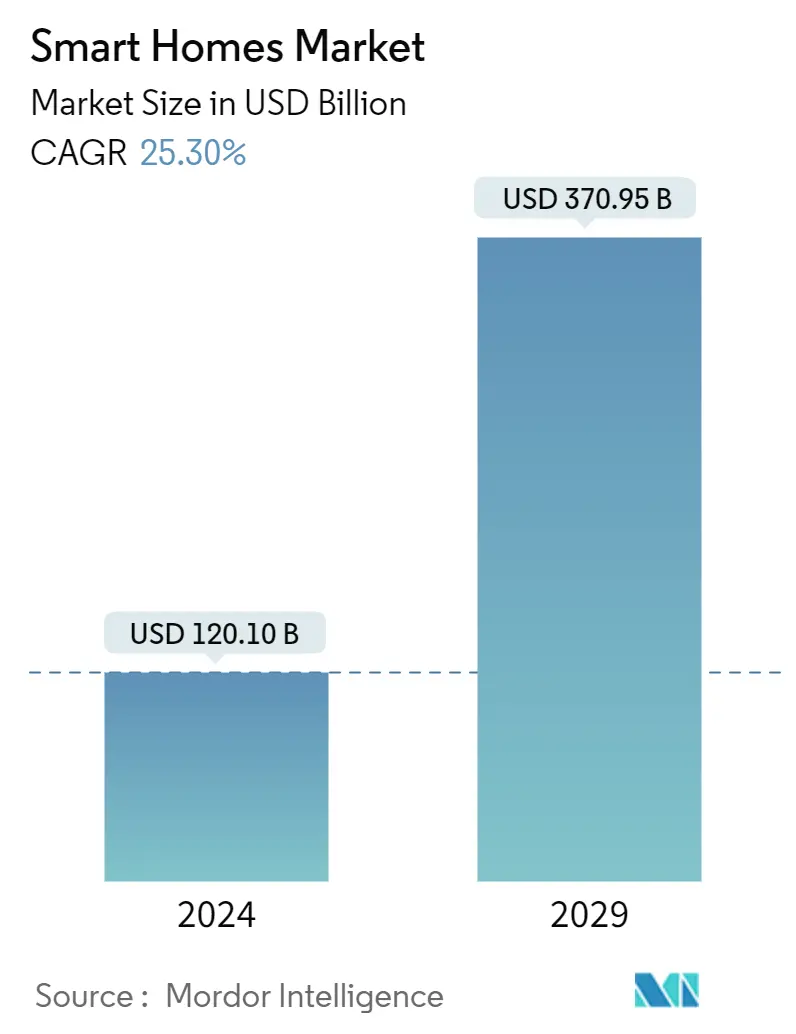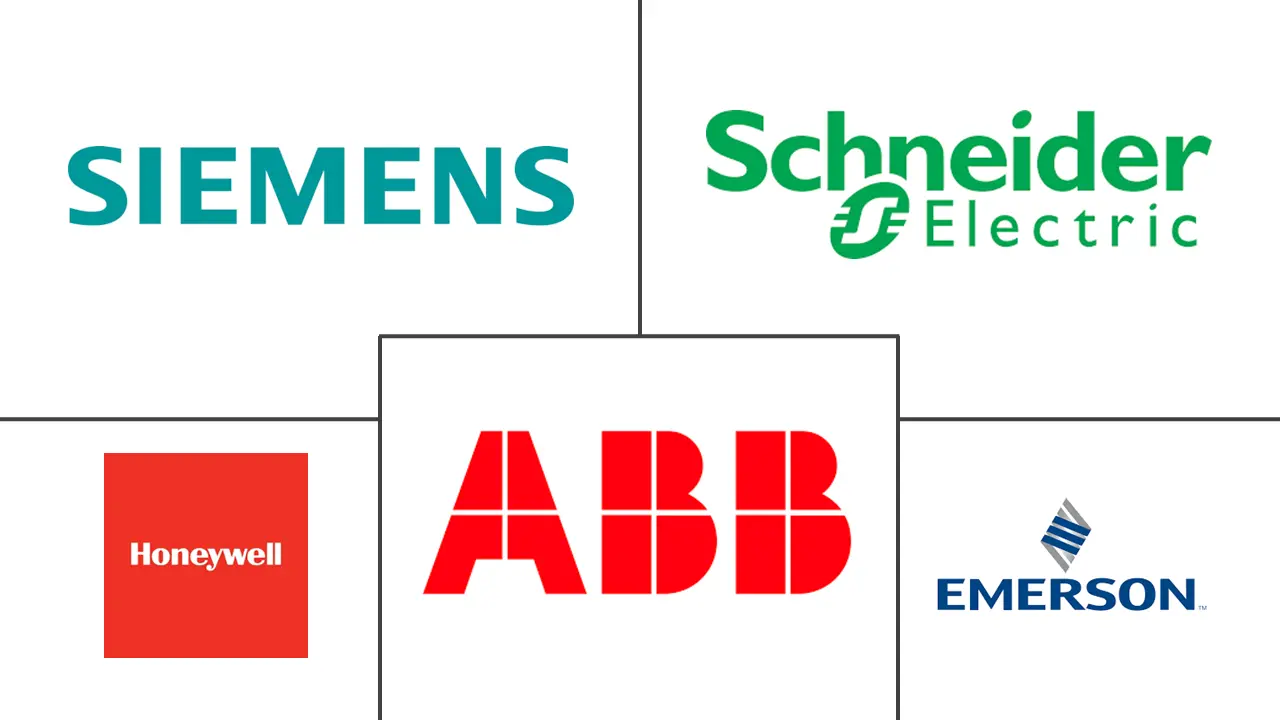Market Size of Smart Homes Industry

| Study Period | 2019 - 2029 |
| Market Size (2024) | USD 120.10 Billion |
| Market Size (2029) | USD 370.95 Billion |
| CAGR (2024 - 2029) | 25.30 % |
| Fastest Growing Market | North America |
| Largest Market | North America |
Major Players
*Disclaimer: Major Players sorted in no particular order |
Need a report that reflects how COVID-19 has impacted this market and its growth?
Smart Home Market Analysis
The Smart Homes Market size is estimated at USD 120.10 billion in 2024, and is expected to reach USD 370.95 billion by 2029, growing at a CAGR of 25.30% during the forecast period (2024-2029).
The Smart Homes Market size is estimated at USD 120.10 billion in 2024, and is expected to reach USD 370.95 billion by 2029, growing at a CAGR of 25.30% during the forecast period (2024-2029).
Across real estate companies and the architect ecosystem, the 'new normal' defined through the social distancing practice resulted in a requirement to go back to the redesign basics and reinvent the residential real estate products by factoring in new-age designing, efficiency, and innovation. As the redesigning happens, the need for a totally new set of amenities has resurfaced and gained prominence. What the customer will need in the 'new normal' has undergone a revolution in the crisis triggered by the COVID-19 pandemic, and it is leading to a paradigm shift in residential spaces.
- Home automation and smart homes are two ambiguous terms used in reference to a wide range of monitoring solutions, controlling, and automating functions in a home. Unlike simple home automation solutions (which could range from motor-operated garage doors to automated security systems), smart home systems require a web portal or a smartphone application as a user interface to interact with an automated system.
- Globally, the increasing importance of the need to counter security issues is anticipated to fuel the demand for smart and connected homes over the forecast period. Moreover, innovative wireless technologies, including security and access regulators, entertainment controls, and HVAC controllers, are expected to foster market growth.
- The companies are continuously investing in new product designs. For example, Google's Nest smart-home division recently introduced a new smart thermostat. The new Nest Thermostat is a simpler model than the Nest Learning Thermostat or Nest Thermostat E and is offered at a lower price of USD 129.99, accounting for a difference of USD 40 less than the Nest E and USD 120 less than the top-of-the-line third-generation Nest Learning Thermostat. It was made available to pre-order immediately.
- T-Mobile also announced that it will be launching a 5G-based home network by 2024. The aim is to extend coverage to previously underserved rural areas across the United States. It is currently offering a trial version of the service on its 4G LTE network to a select a number of T-Mobile customers.
